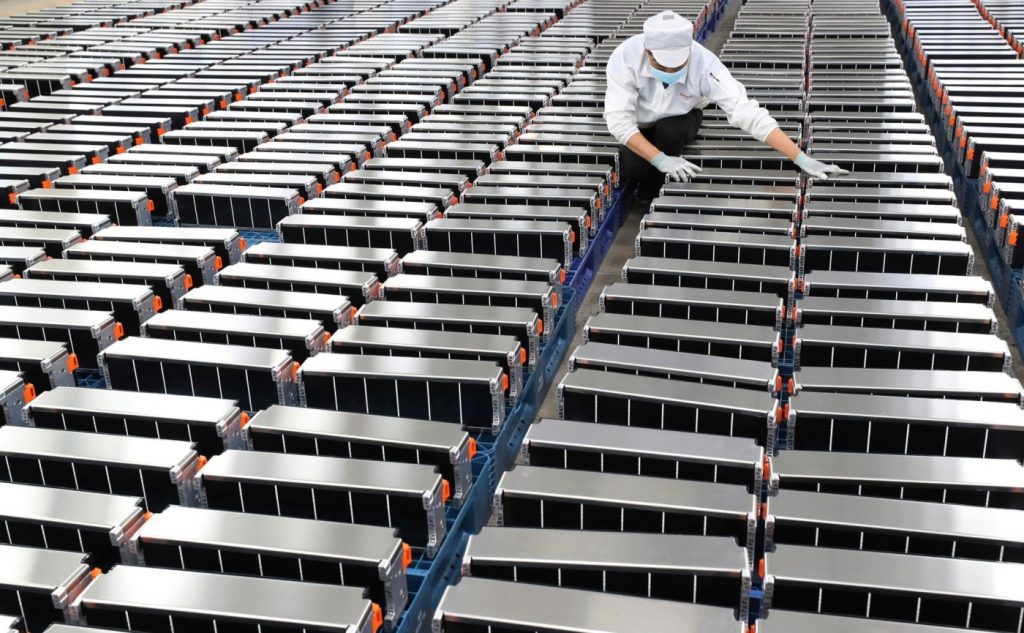Donald Trump is an old-fashioned protectionist, and he has been suggesting for a while that if elected he will quickly impose tariffs of 10% or more on all imports — a “ring around the collar” for the U.S. economy.
But President Joe Biden is by no means a free-trade purist. His signature legislative achievement, the Inflation Reduction Act — which is actually mainly about fighting climate change — contains several nationalistic provisions designed to limit subsidies primarily to manufactured goods produced in North America. And the Biden administration is now imposing tariffs as high as 100% on Chinese exports of electric vehicles and taxes on other imported goods, including semiconductors and batteries.
The immediate impact of these tariffs will be small, because the United States currently imports very few of the affected goods from China. But Biden’s moves are more than a symbolic gesture. They’re a shot across the bow — a signal that the U.S. won’t accept a second so-called China shock, a surge of imports that could undermine crucial parts of the administration’s agenda.
A tale of cheap imports
To understand what I’m talking about, it helps to review some economic and intellectual history.
China’s exports of manufactured goods to the U.S. surged beginning in the 1990s. I think it’s fair to say that most economists, myself included, weren’t initially too worried by this development. There’s an old line in economics that if another country wants to sell you a lot of useful stuff at low prices, you shouldn’t protest — if anything, you should send them a note of thanks.
OK, even the most orthodox of economists knows that it isn’t that simple. Cheap imports may make a nation as a whole richer, but they can also hurt significant numbers of workers. There was in fact a fierce debate in the 1990s about whether imports from low-wage countries were a major reason for rising U.S. income inequality, with most economists — again, myself included — agreeing that imports were a cause of rising inequality, but not the main cause.
However, the economic debate shifted after the 2013 release of a study by David Autor, David Dorn and Gordon Hanson, titled “The China Syndrome,” which later became more widely known as “the China shock.” The authors estimated that Chinese imports had displaced around 1.5 million U.S. manufacturing workers between 1990 and 2007. That in itself isn’t that big a number in an economy as large and dynamic as ours: In fact, in America, around 1.5 million workers are laid off or discharged for one reason or another every month.
But what Autor et al. pointed out was that many U.S. industries are highly localized geographically, so the job losses due to imports, while they looked small on average, were devastating to many communities. I like to use the example of the furniture industry, which probably lost several hundred thousand jobs to Chinese imports. Nationally, that’s a rounding error. But the furniture industry was concentrated in the North Carolina Piedmont region, so the import surge ripped the heart out of local economies such as that of the Hickory-Lenoir-Morganton metropolitan area.
And the political implications of the paper became more relevant a few years later, when it was clear that the disruption of communities by surging imports may have contributed to the election of President Trump.
So the first China shock was a real problem, and even generally pro-free-trade economists — economists who have no sympathy for crude, Trump-style protectionism — now worry about the effects of rapid increases in imports.
China’s weakness
But wait: Why do I say the first China shock? Because there’s now clearly a second China shock building.
This new shock largely reflects China’s weakness rather than its strength. The Chinese economy is in trouble. Consumer spending is very low as a share of national income, and the high levels of investment spending that used to fuel the economy have become unsustainable as a declining working-age population and slowing technological progress lead to diminishing returns. China was able to mask these problems for a while with a huge housing bubble and a bloated real estate sector, but that game appears to be up.
The obvious solution is to transfer more income to households, strengthening consumer demand. But Xi Jinping, China’s leader, seems weirdly unwilling to do the obvious, still focused on production rather than consumption. I’ll leave it to China experts to explain this reluctance — is it geopolitics? Fear that the Chinese people will become lazy?
Whatever the ideology or strategy behind China’s refusal to increase consumer spending, the only way out given that refusal is to run giant trade surpluses, dumping the stuff China produces but can’t or won’t consume in other countries’ markets.
But what the Biden administration is basically saying is: No, you don’t get to do that. You’re too big a player in the world economy to dump the results of your policy failures in other countries’ laps.
Related Articles
Small, well-built Chinese EV called the Seagull poses a big threat to the US auto industry
Death toll climbs to 48 from highway collapse in China
Highway collapse in southern China leaves at least 24 dead
The US and China talk past each other on most issues, but at least they’re still talking
Biden signs $95 billion war aid measure with assistance for Ukraine, Israel and Taiwan
Why can’t the U.S. just accept cheap goods from China? The concerns about community disruption caused by the first China shock still apply. But there’s also a new issue: climate change. The goods being subjected to new or increased tariffs are mainly products associated with the transition to green energy; electric vehicles have been getting the most press, but giant batteries — which are now starting to play a crucial role in solving the problem of renewable energy intermittence (the sun doesn’t always shine, the wind doesn’t always blow) — are an even bigger deal.
Why not just buy cheap Chinese batteries? Political economy. Given the existential threat posed by climate change, the political coalition behind the green energy transition shouldn’t be fragile, but it is. The Biden administration was able to get large subsidies for renewable energy only by tying those subsidies to the creation of domestic manufacturing jobs. If those subsidies are seen as creating jobs in China instead, our last, best hope of avoiding climate catastrophe will be lost — a consideration that easily outweighs all the usual arguments against tariffs.
So in imposing these new tariffs, Biden’s people are doing what they must. I don’t see any alternative.
Paul Krugman is a New York Times columnist.


